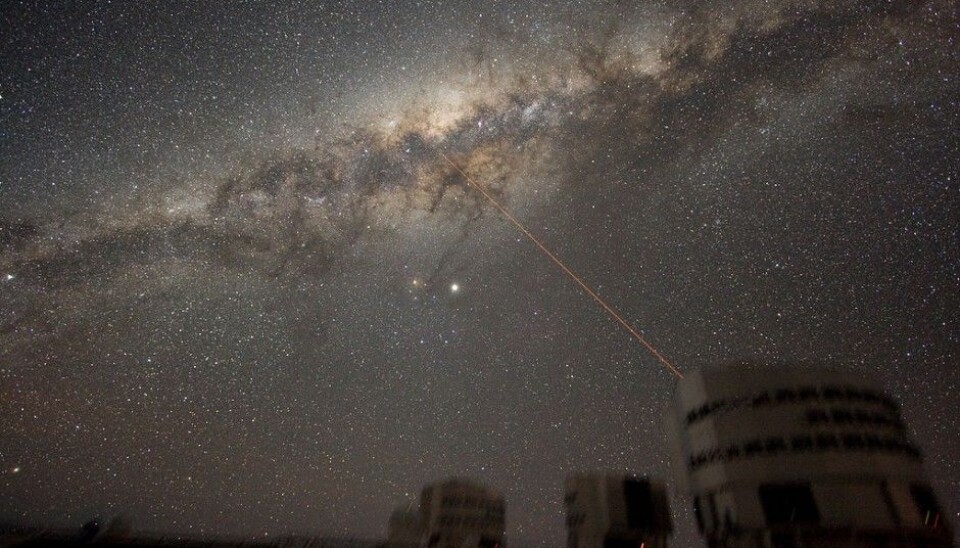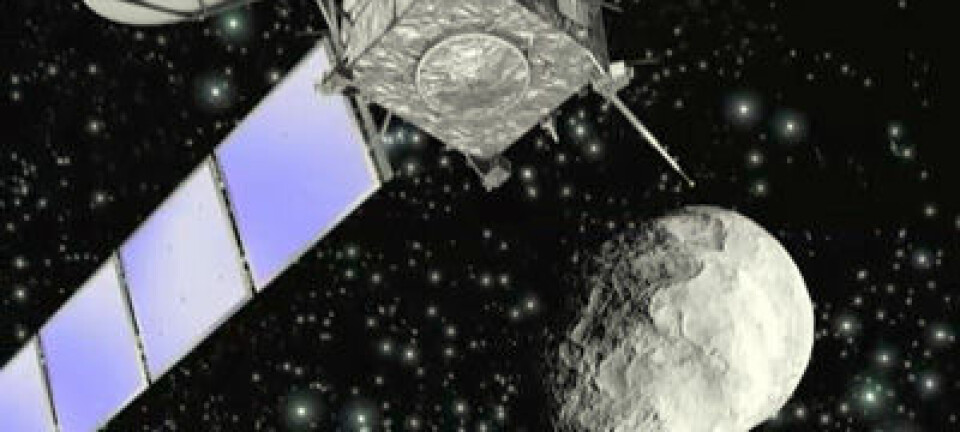
Are aliens really trying to contact us?
Probably not. But why did two Canadian researchers think they were?
When two Canadian researchers reported in October they believed they had discovered signals sent out into the universe by extraterrestrial life forms, the reaction was, well, sceptical.
British newspapers were especially rough on the researchers, with articles accompanied by photos of strange-looking green aliens. The scientific community was more measured in its reaction, but was nevertheless unconvinced.
So why did Ermanno Borra and Eric Trottier from the Universite Laval in Quebec come forward with their fantastic claim? We asked Sven Wedemeyer, a researcher at the Institute of Theoretical Astrophysics at the University of Oslo, to help us understand the science behind the report.
First: is it really true?
In brief, it’s unlikely to be true. But Wedemeyer and others say that they can’t yet rule out the possibility that the two Canadian researchers might be right.
Asked to comment when the report was first released in October, Wedemeyer said he was very sceptical. He was far from alone.
The largest research programme in the world that is looking for evidence of extraterrestrial life, the Breakthrough Listen Initiative, was also quick to say the claim needed far more study before it could be confirmed.
“Extraordinary claims require extraordinary evidence,” the group wrote in a statement. “It is too early to unequivocally attribute these purported signals to the activities of extraterrestrial civilizations.”
Data from 2.5 million stars
The Canadian researchers sifted through measurements from 2.5 million stars recorded in the Sloan Digital Sky Survey archive (SDSS). These measurements are made by a telescope in New Mexico, in the United States.
The SDSS measurements enable scientists to analyse the composition of light from lots of stars that are far, far away from the Earth. Borra and Trottier believe they found something that could be considered an artificial signal hidden in the light of 234 of the stars they examined. Almost all these stars belong to spectral types F, G and K, which means that they share some characteristics with our Sun (which is a G2 star).
The evidence the researchers found consisted of a pulsating signal.
“The frequency of the signal was so regular that they surmised it must be artificial and made by powerful lasers,” Wedemeyer said.
The researchers qualified their findings, and did not say outright that the signals were created by extraterrestrial life, but their scientific article goes pretty far in suggesting that aliens might be behind the signals they found.
Building on earlier theories
Borra had previously speculated in a 2012 article in the Astronomical Journal that if an advanced civilization wanted to make contact with other advanced civilizations, broadcasting a clearly artificial signal would be one way to do it.
One obvious problem is that any laser able to send signals over very long distances would have to be extremely powerful. Nevertheless, according to media reports, Borra has said he thinks it is possible to send these kinds of signals with technology available today.
According to Borra’s theory, signals would be sent with lasers from planets orbiting distant stars. The signals would be superimposed on the light from the stars, but a civilization elsewhere in the universe with telescopes and the ability to conduct a proper analysis should be able to detect the signals.
“This is very speculative, but it is a theory,” Wedemeyer said. “You can’t disprove that this kind of civilization is out there.”
Several sources of errors
Wedemeyer and other researchers note that the methods the scientists used to detect the signals might be a source of potential error.
While the researchers did discuss different explanations for the signal, including natural sources or errors in the analysis, they also argued that it is highly improbable that there were methodological errors.
Nevertheless, “we’re talking about sophisticated instruments and weak signals, so it is not impossible that something has gone wrong in the analysis,” Wedemeyer said.
An as-yet unknown phenomenon?
It’s also possible the researchers have detected an as-yet unknown phenomenon.
In 1967, for example, astronomers reported the discovery of pulsars. These are extremely massive, young stars with a regular rotation that emit powerful radio signals. Whenever the radiation cone from one of these stars passes over the Earth, astronomers pick up a regular signal.
The first pulsar was called LGM-1, for Little Green Men 1, since the signal was so regular and clear that researchers suggested early on that it could be a beacon sent by extraterrestrial life.
Whatever the source of the signals reported by Borra and Trottier, there is general agreement, even from the two scientists themselves, that it needs to be investigated further.
--------------------------------------
Read the Norwegian version of this article at forskning.no
Scientific links
- Borra, Trottier: Discovery of peculiar periodic spectral modulations in a small fraction of solar type stars. Publications of the Astronomical Society of the Pacific, (2016) DOI: 10.1088/1538-3873/128/969/114201.
- Borra: SEARCHING FOR EXTRATERRESTRIAL INTELLIGENCE SIGNALS IN ASTRONOMICAL SPECTRA, INCLUDING EXISTING DATA. Astronomical Journal,(2012). DOI: 10.1088/0004-6256/144/6/181.
































